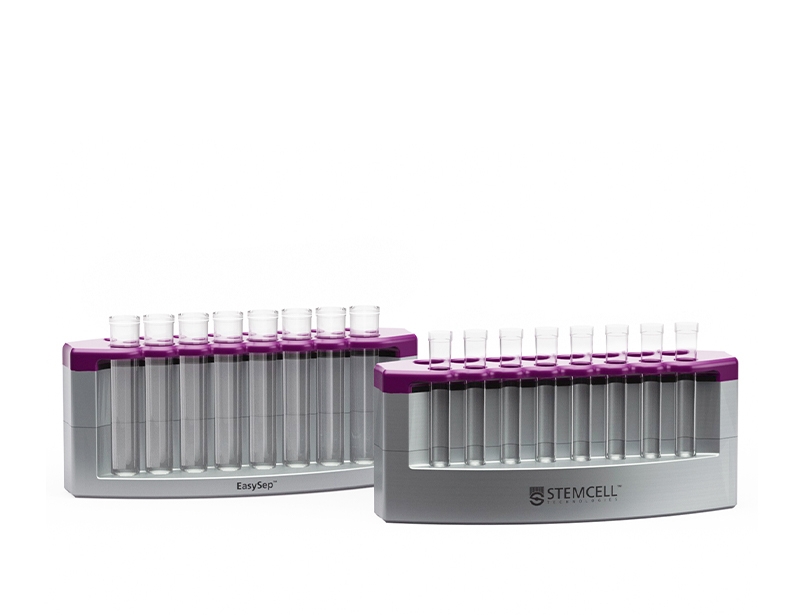概要
The EasyEights™ EasySep™ Magnet is designed for cell separation procedures using selected EasySep™ reagents when simultaneously processing multiple samples, up to eight samples on each side, a total of 16 samples. The EasyEights™ EasySep™ Magnet has a large sample range, capable of processing small samples, starting at 0.1 x 10^8 cells, to larger samples, up to 8.5 x 10^8 cells. The EasyEights™ EasySep™ Magnet is designed to hold up to 8 standard 5 mL (12 x 75 mm) round-bottom tubes on one side, and 8 standard 14 mL (17 x 95 mm) round-bottom or 15 mL conical tubes on the other side.
技术资料
| Document Type | 产品名称 | Catalog # | Lot # | 语言 |
|---|---|---|---|---|
| Product Information Sheet | EasyEights™ EasySep™ Magnet | 18103 | All | English |
数据及文献
Publications (1)
Frontiers in immunology 2020
Whole Transcriptome Analysis Reveals That Filifactor alocis Modulates TNF$\alpha$-Stimulated MAPK Activation in Human Neutrophils.
Abstract
Abstract
Periodontitis is an irreversible, bacteria-induced, chronic inflammatory disease that compromises the integrity of tooth-supporting tissues and adversely affects systemic health. As the immune system's first line of defense against bacteria, neutrophils use their microbicidal functions in the oral cavity to protect the host against periodontal disease. However, periodontal pathogens have adapted to resist neutrophil microbicidal mechanisms while still propagating inflammation, which provides essential nutrients for the bacteria to proliferate and cause disease. Advances in sequencing technologies have recognized several newly appreciated bacteria associated with periodontal lesions such as the Gram-positive anaerobic rod, Filifactor alocis. With the discovery of these oral bacterial species, there is also a growing need to assess their pathogenic potential and determine their contribution to disease progression. Currently, few studies have addressed the pathogenic mechanisms used by oral bacteria to manipulate the neutrophil functional responses at the level of the transcriptome. Thus, this study aims to characterize the global changes at the gene expression level in human neutrophils during infection with F. alocis. Our results indicate that the challenge of human neutrophils with F. alocis results in the differential expression of genes involved in multiple neutrophil effector functions such as chemotaxis, cytokine and chemokine signaling pathways, and apoptosis. Moreover, F. alocis challenges affected the expression of components from the TNF and MAPK kinase signaling pathways. This resulted in transient, dampened p38 MAPK activation by secondary stimuli TNF$\alpha$ but not by fMLF. Functionally, the F. alocis-mediated inhibition of p38 activation by TNF$\alpha$ resulted in decreased cytokine production but had no effect on the priming of the respiratory burst response or the delay of apoptosis by TNF$\alpha$. Since the modulatory effect was characteristic of viable F. alocis only, we propose this as one of F. alocis' mechanisms to control neutrophils and their functional responses.

 网站首页
网站首页




